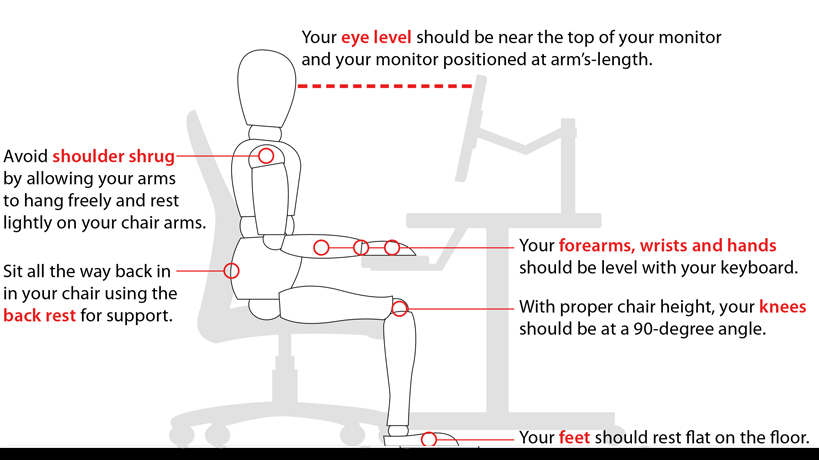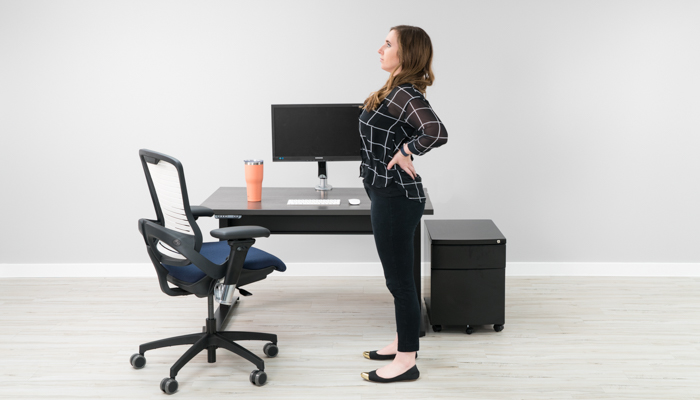Poor sitting posture and effects on spine health
Have a desk job and worried about your sitting posture? You are right too! Over time, poor posture from bad habits during everyday activities can wreak havoc on your spine. For instance, having a desk job, driving, leaning over a cell phone, carrying a bag over the same shoulder, prolonged standing, breastfeeding and caring for small children, or even sleeping.
Poor posture can become ingrained, causing and aggravating episodes of back and neck pain and damaging spinal structures. What’s more, damaged spinal structures can have other knock-on effects throughout the rest of the body. The good news is, our spine is adjustable and with a few simple changes, good posture and spine health can be achieved.
Here are a couple of steps you can take immediately to improve bad posture:
1. Identify the symptoms of back pain caused by an inefficient work environment and poor posture.
- Did something change in your environment within the same period the pain commenced? For example, a new job, a new office chair, or a new car, a new desk.
- Is the back pain is worse at certain times of day, or week? For instance, after a long day of sitting in an office chair in front of a computer.
- Does the pain start in the neck and move downwards into the upper back, lower back, and extremities?
- Does the pain ease after switching positions?
2. Keep the body aligned properly while sitting in an office chair and while standing
- When standing, distribute body weight evenly across the front, back, and sides of the feet.
- When sitting, select a chair that’s features support good posture. Sit up straight and align the ears, shoulders, and hips in one vertical line.
- If you need to change position throughout the day, try shifting forward to the edge of the seat with a straight back and alternate with sitting back against the support arch of the office chair to ease the strain on back muscles.
- Try a balance / swiss ball. In this position, the pelvis is tilted gently forward increasing the lumbar curve which shifts the shoulders back (similar to sitting on the edge of a chair seat).
- Be aware of and avoid positions that lead to bad postures, such as crossing legs unevenly while sitting, sitting on your legs, leaning to one side, hunching the shoulders up or forward, and tilting the head.

3. Get up and move frequently.
This one is so easy to achieve, yet often the most forgotten. As muscles become strained, slouching, slumping, and other bad postures occur; this in turn puts extra pressure on the neck and back.
Change positions frequently, in order to maintain a relaxed yet supported posture. At work, set an alarm to remind you to get up and take a break from sitting in an office chair every hour for at least two minutes. During this time stretch, stand, or walk.
Looking for a Chiropractor in Auckland?
Contact Revolution Chiropractic – Leading Sports Chiropractor Auckland
To Schedule your FREE CONSULTATION at Revolution Chiropractic E-mail or Call us on 09 418 3718.
You can also book online here!
Follow us on Instagram Or Twitter, connect with us on LinkedIn, become a fan on Facebook.








